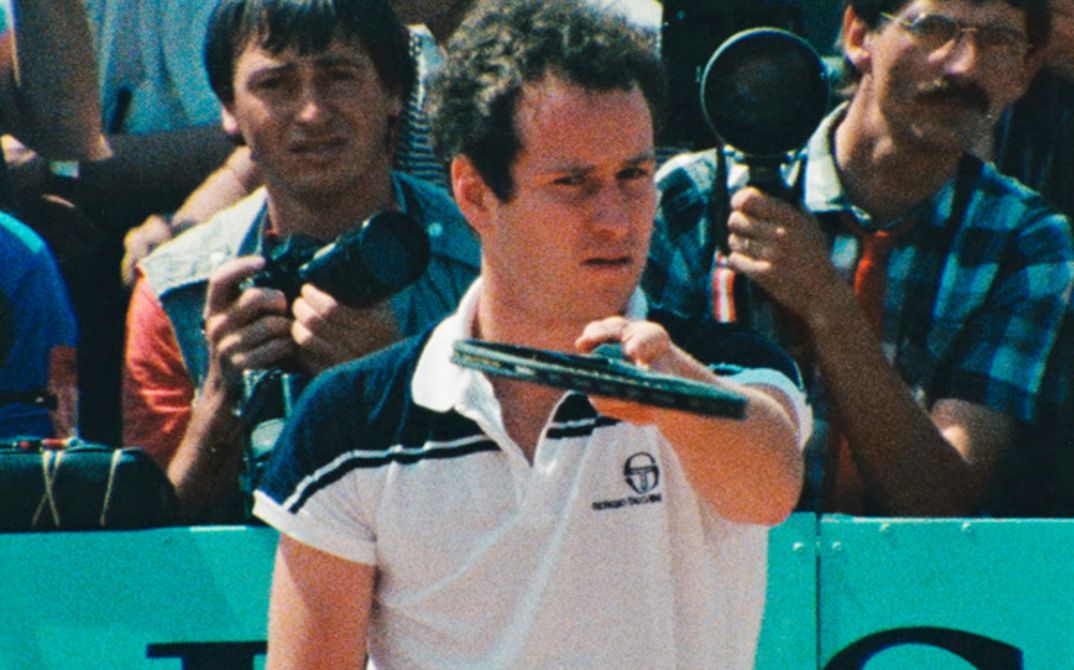Sport does not lie
In an interview with Jérôme Bureau and Benoît Heimermann that appeared in “L’Équipe” on 9 May 2001, the film director Jean-Luc Godard said: ‘I still watch sport because it has remained something in which the human body doesn’t lie. Politics, cinema and literature can lie, not sport.’ This idea very quickly seemed to me to be at the core of L’EMPIRE DE LA PERFECTION.
Cinema can lie, not sport. On a tennis court, John McEnroe runs and suffers. He wins or loses. Those are the only options. There’s no time for editing or special effects. His list of achievements is also something concrete. It is verifiable. You would never think of setting up a rankings list of Mozart, Bach and Haydn. However, you can easily look at the ATP charts to know if John McEnroe was in front of Jimmy Connors on such-and-such a date or behind Bjorn Borg. There is condensed in this phrase: ‘Cinema can lie, not sport’ a sort of contradiction that demands a pause for thought. That’s exactly what I wanted to explore and delve into. I also wanted to deconstruct the image of the player/actor who moans and who is impulsive – the latter-day pigeonhole for McEnroe in cinema or in advertisements.
Using rushes shot in 16mm by the cinematographic service of the Institut National du Sport et de l’Education Physique (INSEP) during the French Open at the start of the 1980s, I have endeavoured to share the moment of truth that competition represents. I have attempted to show McEnroe as a professional sportsman going about his business, which is dedicated to achieving the only thing that really interests him on a tennis court: beating his opponent.
At the same time, because we are so conditioned by the video images of televised broadcasts, the cinematographic texture of 16mm transports us quickly into the realm of fiction. The theatricality of McEnroe and his very overt signs of dissatisfaction in front of the crowd or in full view of the camera take us – because it really is so unusual – into a domain that is more Actors Studio than high-level sports.
In these rushes, there is also an extraordinary ambiguity and a rich sense of place that very quickly made me want to make a film out of them. These rushes are also the subject of the film. They have steered the writing. They have, to a large extent, determined the editing. I was immediately stunned by the two levels that I found. They had the capacity to inform us as much about how the tournament was shot as the tournament itself. The rushes present what goes on behind the scenes and yet they have the substance of a film sequence. They are a perpetual link between the action on and off camera.
These rushes also destroy the tenets of documentary cinema which, to a certain extent, try to make you forget that a film is being made. When you are making a documentary, there are essentially two paths.
On the first, you attempt to make it utterly credible that the people you are filming are being portrayed exactly as they are in real life and that the presence of your camera is changing absolutely nothing. In this instance, the viewer would effectively forget that they are watching a film.
On the second, you assume that the presence of your camera alters things, that your project – despite your best efforts – interferes with the reality that you are confronting and the subject of your documentary becomes part of these changed circumstances. In this instance, you offer up a piece which shows this new relationship of ‘the filmer’ and ‘the filmed’ which is the product of your involvement/intrusion.
These 16mm rushes were shot over the course of five years and I have found in them material to push me more towards the second path. And the choice of direction has come with no little satisfaction.
When the prospect was thrust upon me of working on images from tennis training films – which apparently had no cinematographic value – I remembered a few phrases from Jean Epstein’s book “Esprit de cinéma”: ‘No particular kind of subject guarantees the success of a film and no particular kind of subject necessarily leads to a failure.’ -
‘In that way the truest and most profound subject of any painting is the painting itself: the truest and most profound subject of any film cannot be anything other than cinema.’ (Julien Faraut)
